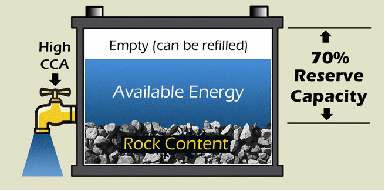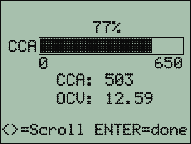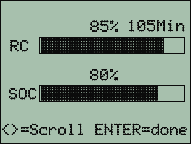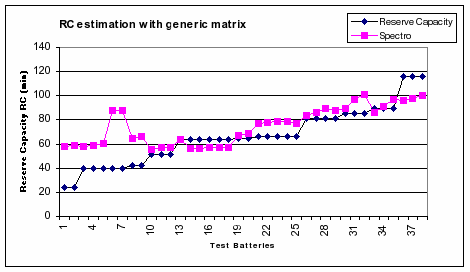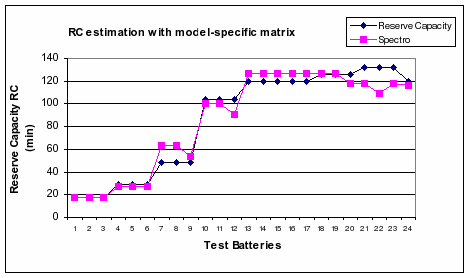A Look at Emerging Technologies Capable of Estimating Battery Reserve Capacity
by Isidor Buchmann
Cadex Electronics Inc.
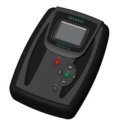 Ac conductance testing was introduced in 1992 as a new way of measuring the
cold cranking amps (CCA) of a car battery. This non-invasive method was hailed
as a major breakthrough and, to a large degree, eliminates load testing to
measure battery performance. The test only takes a few seconds; the readings
are displayed in digital numbers and a message spells out the condition of the
battery. There are no sparks at the battery terminals and the instrument
remains cool.
Ac conductance testing was introduced in 1992 as a new way of measuring the
cold cranking amps (CCA) of a car battery. This non-invasive method was hailed
as a major breakthrough and, to a large degree, eliminates load testing to
measure battery performance. The test only takes a few seconds; the readings
are displayed in digital numbers and a message spells out the condition of the
battery. There are no sparks at the battery terminals and the instrument
remains cool.
However, single-frequency ac conductance has limitations. It does not measure CCA according to SAE standards, but offers an approximation relating to the battery's power output capability. This relative power figure often varies with state-of-charge and other battery conditions. At times, a good battery fails and a faulty one passes by error; the most significant drawback is its inability to read the reserve capacity (RC). Despite these shortcomings, ac conductance has become an accepted standard for predicting battery life and determining when to replace an old battery before it becomes a nuisance.
What are the main differences between CCA and RC? A high CCA reading ensures good battery conductivity and provides strong cranking ability. High CCA goes hand-in-hand with a low internal battery resistance. Figure 1 compares high CCA with a large, open tap that allows unrestricted flow.

Figure 1. Battery with high CCA and 100-percent reserve capacity. A high CCA battery can be compared to a large, open tap that allows unrestricted flow.
